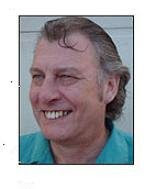
Some writing handbooks are inspiring as well as instructive. Noah Lukeman's The Art of Punctuation is one such. After reading a chapter from the book I feel a need to write a few passages and play around with the placement of punctuation - to test how subtle changes can alter rhythm, pace, cadence, emphasis and meaning.
More About How to Write a Mi££ion is more instructive than inspiring.
Having said that it's still useful - in parts.
With a foreword by novelist Michael Ridpath (who was plucked from the slushpile by agent Carole Blake at Blake Friedmann) this is actually three books - Description - Revision - Setting - wrapped in a single cover, issued as a follow up to the original How to Write A Million.
I find the discussion of telling detail in Description useful.
Some of the stuff in the section Revision is useful - but overall I feel it a bit laboured. Most readers of this blog would, as the writer suggests, skip straight to Chapter Three: Kinds of Revision.
I did find a lot of the stuff in the Setting section very useful. And I have to say I believe my use of settings did improve after reading and studying it. Many readers/reviewers on YWO, for example, have commented positively on my ability to describe setting and atmosphere economically and convincingly in my novel After Goya.
The book reminds us that the same physical settings can have a radically different feel and appearance depending on the time of day and time of year. These changes in the mood of a place are often caused by local custom or byelaws, local geography and/or weather patterns; details often overlooked during research.
Here, in Barcelona, for example, most shops outside the tourist zones close every Saturday afternoon; and a good proportion of businesses close down for the whole of August. Visitors from the States and the UK find this difficult to understand; non-visitors likely assume commerce continues all year round. Any novel set in August in Barcelona would not ring true unless it alluded to the fact that Barcelona is very much a ghost of itself every August.
Again, on New Year's Eve in Barcelona the locals traditionally wear red underwear. You may be pressed to find that information in a tourist guide, but then maybe not. But you get my drift.
So, when visiting an actual location make notes on every aspect of civic and street life. If you've done your job properly you'll find a few telling details amid your notes (e.g. the colour of local taxis, the time of the last metro train, the fact that every other Tuesday in May, June and July the locals indulge some crazy custom, like slapping each other with a certain type of fish [but then, that is the sort of info you would find in a Lonely Planet guide]) that you can use to add not colour but verisimilitude to your work-in-progress.
The section Setting contains a handy chart to use when researching a place, with boxes to note your first impressions through to the political complexion of the local administration.
In summary More About How To Write a Million is worth a look at, if only for the section on settings. I picked up a copy for 50 pence in a remainder shop - so, I didn't feel ripped off - but I'm not convinced it's worth the 9.99 cover price.
Do you have any ideas for dealing with settings? How do you set about researching a place?




No comments:
Post a Comment